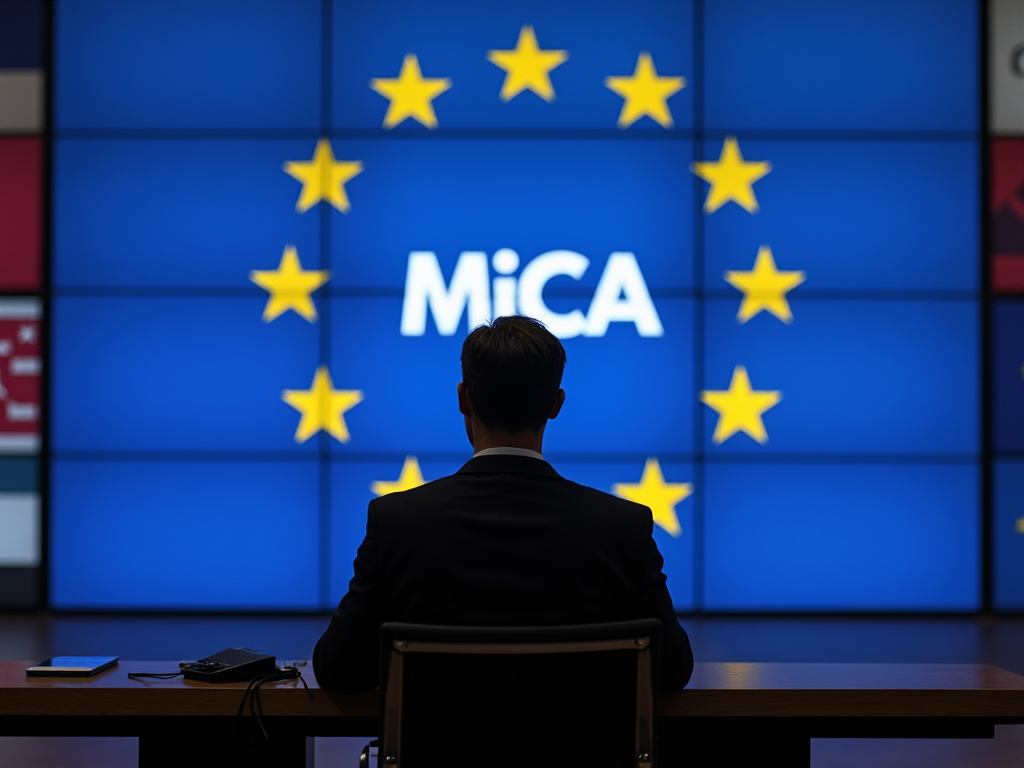The world of cryptocurrencies resembles a wild west, where regulations should pave the way for safety and clarity. As states around the world work on regulations, investors face new challenges and opportunities. The MiCA regulation in the EU and the Bitcoin policy of the United States are just two examples shaping the global cryptocurrency market. In this article, we analyze how these regulations are changing the investment landscape and what investors need to know to make smart decisions.
MiCA and the Redesign of the Crypto Landscape – Opportunities and Challenges

The Crypto Assets Markets Regulation (MiCA), a comprehensive regulation by the European Union, has raised expectations of not only regulating the crypto market more efficiently but also making it more transparent. This initiative, which will fully come into effect on December 30, 2024, has ambitious goals: it aims to enhance investor protection, prevent market abuse, and create a uniform legal framework that provides both security and clarity.
The undeniable advantage of this regulation lies in the creation of legal certainty and transparency. Investors can enjoy a uniform regulatory environment that allows them to invest with greater confidence and improved information availability. This increased transparency, resulting from stricter regulatory measures, also attracts institutional investors. The influx of investments with substantial resources will increase confidence in digital assets as a whole.
Moreover, MiCA allows companies to offer a wider range of services. From creating innovative financial instruments like staking programs to crypto loans, the offering is diversified. These evolutions provide investors with new possibilities for portfolio diversification while ensuring regulatory clarity.
However, these measures also have perceived negative effects. Critics fear over-regulation that may particularly disadvantage retail investors, increasing management costs for providers. In the end, these costs could be passed on to consumers, leading to higher fees. Strict rules could prove discouraging for some crypto companies, which may decide to leave Europe due to the regulatory burden.
Another controversial topic is the fate of stablecoins that are non-compliant with MiCA. These could be excluded from the market, limiting liquidity, as reliable and liquid stablecoins play an important role for many investors in the trading environment.
Globally, MiCA showcases pioneering characteristics. The European regulatory strategy offers valuable insights for other countries developing their own regulations in this sector. By creating a model, MiCA could contribute to the harmonization of global crypto regulation and promote international cooperation, especially in managing cross-border transactions.
The Travel Rule supplements MiCA, implementing additional security measures in the cryptocurrency sector. This requires crypto service providers to collect detailed information about the senders and recipients of every transaction. Investors here experience a significant reduction in their anonymity, which could pose a problem for some users. Overall, MiCA offers both opportunities for a more stable market environment and challenges arising from potential over-regulation and increasing compliance requirements.
Bitcoin Policy in the United States: A Strategy with Global Consequences

The current Bitcoin policy of the United States, particularly the introduction of a strategic reserve of Bitcoin, is making waves in the global financial landscape. Donald Trump’s government made a significant turnaround, placing cryptocurrencies at the center of its economic agenda. This not only represents a paradigm shift in politics but also offers an interesting perspective on global geopolitical and financial movements.
The decision to create a state Bitcoin reserve marks a historic step, as the United States thus adopts a pro-crypto stance that investors perceive as a signal of recognition and legitimacy. This strategy could prove decisive in the long term for positioning the United States as a leading center for cryptocurrencies and competing with other economic superpowers that are also strengthening their crypto economic models.
However, while the initiative to establish a Bitcoin reserve initially led to an increase in Bitcoin’s price, uncertainty quickly manifested itself. This uncertainty was not only an expression of the volatility of cryptocurrencies but was amplified by general economic factors such as inflation and geopolitical tensions. It demonstrates that political decisions and economic developments are closely interconnected and directly influence the crypto market.
Internationally, market reactions show that while the United States is a significant player, other countries are also developing alternative sustainable strategies. While American policy is increasingly establishing itself as a model for pro-crypto regulations, various trends at the global level underline the global nature of cryptocurrency development.
Challenges remain present. A state Bitcoin reserve carries risks for the state budget due to the enormous price fluctuations of Bitcoin, which can result in dramatic changes in asset value. Critical voices express concerns about political integrity and warn of possible entanglements between political interests and financial enrichments.
Despite the critical voices, the long-term prospects remain promising. If the remaining numbers and rules associated with this strategy remain stable and transparent, this could lead to greater global acceptance of cryptocurrencies. Through their Bitcoin policy, the United States has sent a signal that could determine the future of the cryptocurrency market and its integration into the global economy more than any previous regulatory decision.